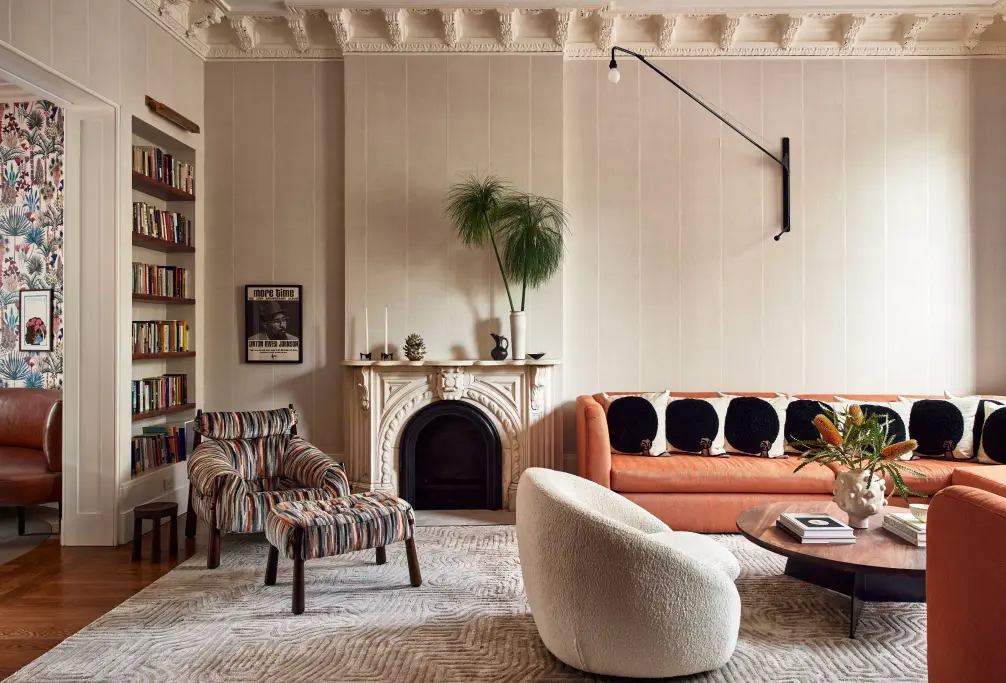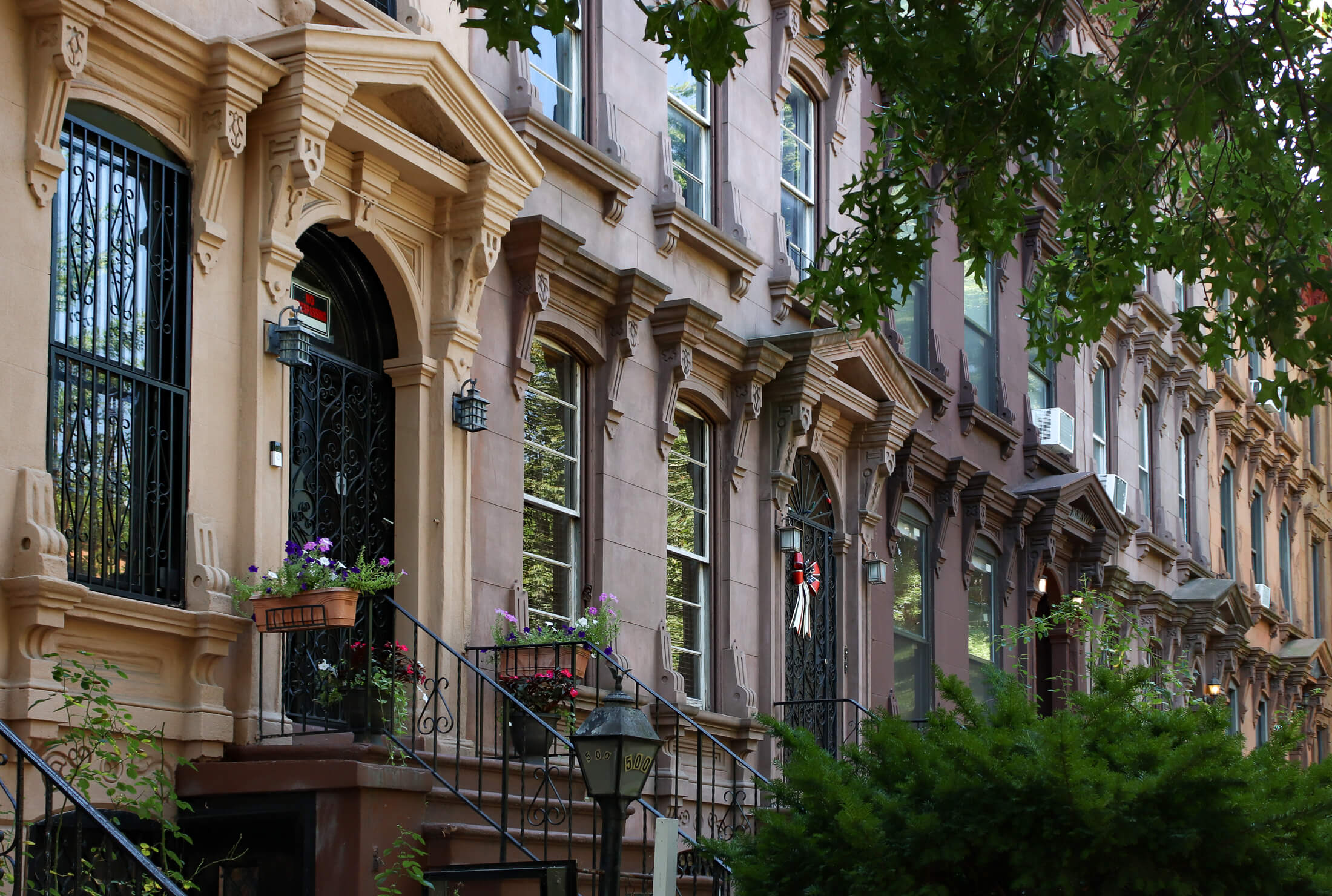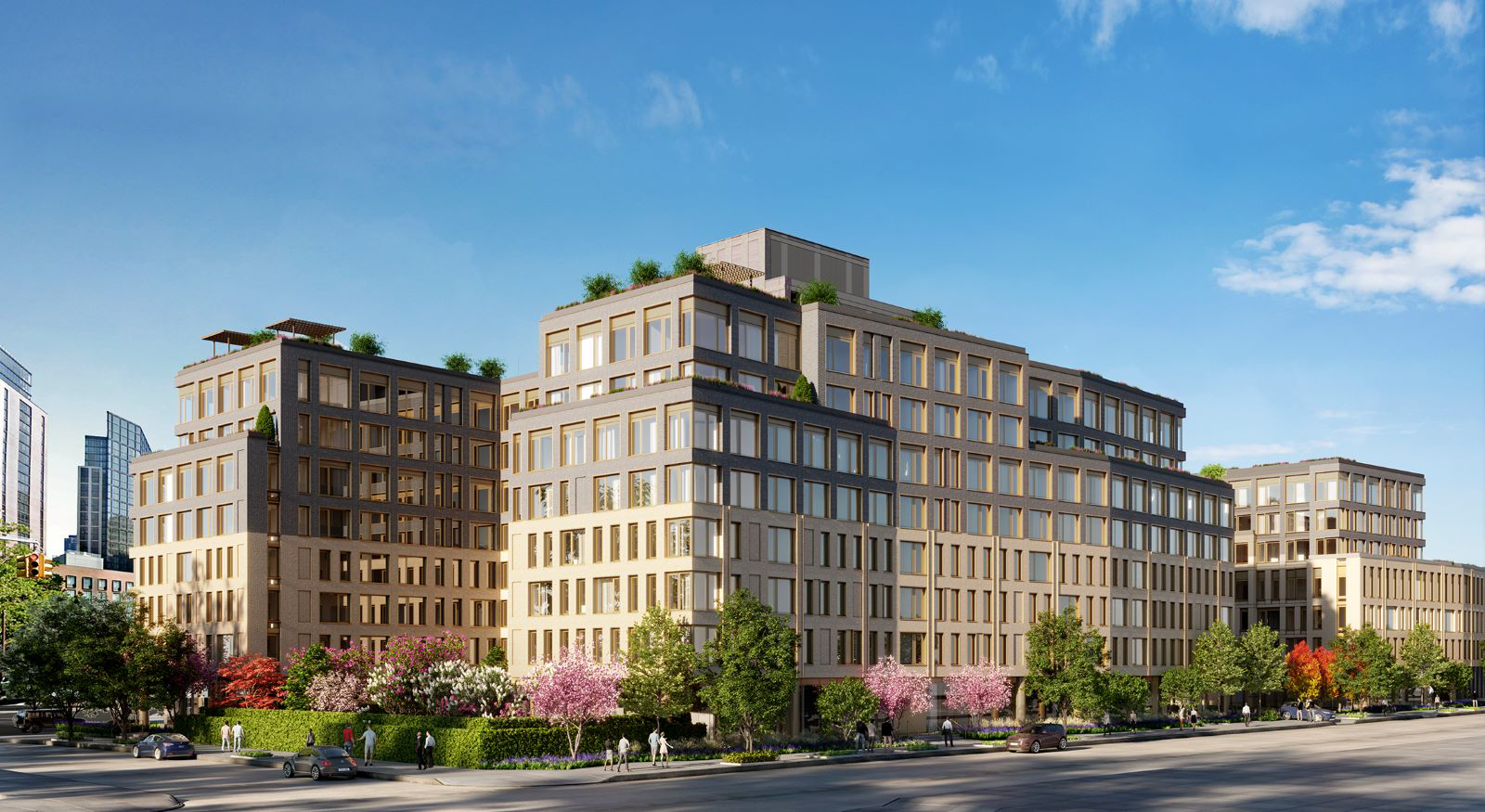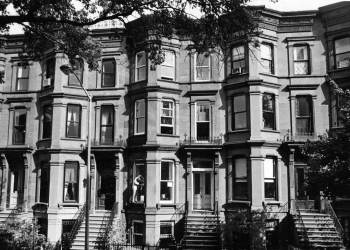Queenswalk: The Church in the Gardens
Grosvenor Atterbury – now that’s a name that conjurs up a life of WASPY one percentage. To a great extent, the man mirrored the name. Mr. Atterbury, born in 1869, was the son of a wealthy family, and spent his teenage summers at the family’s vacation home in Southhampton, a “cottage” called Sugar Loaf, designed…


Grosvenor Atterbury – now that’s a name that conjurs up a life of WASPY one percentage. To a great extent, the man mirrored the name. Mr. Atterbury, born in 1869, was the son of a wealthy family, and spent his teenage summers at the family’s vacation home in Southhampton, a “cottage” called Sugar Loaf, designed by Stanford White. No doubt living in this architectural delight helped develop his interest in architecture, and he went on to study at Yale and Columbia before being apprenticed by Stanford White’s firm, McKim, Mead & White.
After a few years there, he set out for more study in Paris, and when he returned to New York, he put out his shingle as an architect. His first commissions were for summer homes and country estates, mostly on Long Island. He did quite well there, creating imaginative and interesting houses for his wealthy clients. In 1897, sugar baron Henry Havemeyer commissioned an entire waterfront community from Atterbury; a community in Islip, Long Island planned around artificial canals. This experience no doubt served as an excellent lesson for his future commissions.
Atterbury also designed a house for Havemeyer in Manhattan, and had other city clients as well, including himself. It was the beginning of the 20th century, and the Beaux-Arts architectural firms like his old employers, McKim, Mead & White, as well as Richard Morris Hunt, Carrére and Hastings, Warren & Wetmore and others were creating spectacular public and private buildings, all dripping with the wealth of the clients and institutions that commissioned them. Atterbury came from these people, knew them, socialized in the same circles, and had many of New York’s wealthy as clients, but his interests went beyond his social circle.
He was also interested in the pressing social needs of the day, and housing for the poor. He designed the Phipps Model Tenement in 1907, which was located on East 31st Street. It was an innovative and beautifully designed example of what tenement housing could be with some imagination and care. Unfortunately, that building is long gone. He also designed a public pool for the children of Pittsburgh for the same Phipps family.
His interest in affordable housing caught the interest of one of the 20th century’s greatest philanthropists, Mrs. Margaret Olivia Slocum Sage. She was the widow of Russell Sage, an extremely wealthy railroad magnate and financier who had made his money along with Gilded Age Wall St. barons like Jay Gould. Olivia Slocum was his second wife, ten years younger than he, and when he died at 46, in 1906, she inherited his vast fortune. Whereas Russell Sage himself could hardly bear to part with a dime for charitable causes, Mrs. Sage spent the rest of her life giving his money away.
Russell Sage had been ill for quite a while before his death, and Olivia managed his money so well, it impressed even him. After his death, she managed the fortune equally well, funding an amazing amount of charitable causes, large and small. Always interested in education, especially for women, she established schools and colleges. She established wildlife refuges, gave money to all kinds of organizations, and took a great interest in housing for the poor and working class families. One of her pet projects was a new housing development she wanted to establish in Queens.
Always interested in ways to improve the lives of the working poor, she established the Russell Sage Foundation with ten million dollars, and hired Atterbury to design a village, where people of different incomes could create a unique community. Forest Hills Gardens was the result. The 142 acre village was based on the model of the English planned garden suburb community called Hampstead Garden Suburb, near London.
FHG consists of around 800 homes, townhouses and apartments, mostly designed in Tudor or Georgian styles. The homes are set in a park setting, which was designed by Frederick Law Olmsted, Jr, son of the great landscape architect who, with Calvert Vaux, designed Prospect and Central Parks. The village was designed to make commuting to Manhattan convenient, and so the village’s central square is built around the Forest Hills LIRR station.
Mrs. Sage wanted Forest Hills Gardens to be affordable, but the cost of creating this idyllic village soared far above expectations. Grosvenor Atterbury came up with some unique and innovative cost cutting features, such as prefabricating elements off site, and building with innovative concrete slabs of his own design, which had hollow insulating panels. But that wasn’t enough to bring the costs way down. When FHG was finally finished, in 1912-13, it was too expensive for the working people much of it was designed for, and became an exclusive and wealthy enclave, where it remains today.
Many of the first homeowners and residents of Forest Hills Gardens were Protestants. They asked Mrs. Sage if a church could be built in the village. Mrs. Sage agreed, and Grosvenor Atterbury designed this wonderful English style country church. The potential congregants formed a committee to decide which denomination the church would be, and five committee members from five different denominations sat down to figure this out. A simple statement of faith was drawn up, and in the end, it was decided that the new church would be a Congregational Church.
Congregationalists hail from New England, the spiritual descendants of the Pilgrims, and they have always been an open, welcoming and progressive denomination. Henry Ward Beecher’s Plymouth Church in Brooklyn, a champion of the anti-slavery movement, was Congregational. This particular denomination has always been welcoming of others, and was the perfect choice for what this ecumenical Forest Hills Gardens Community wanted.
The first church services were held in a store at Station Square, in 1912. There were forty congregants at that service. The land at 50 Ascan Avenue at Greenway North was donated and a temporary chapel was constructed. In 1914, Mrs. Sage paid for the building of Atterbury’s church, and the first service was held there in 1915. Her only condition on her gift was that the church’s doors would always be open to anyone who loved the Lord. That condition has always been met.
The church is a charming stone structure with half-timber trim, and lovely English Arts and Crafts style stained glass windows. It fits in perfectly in this English style village, and is one of the best buildings in the entire community. Its interior is just as one would expect; warm, woody, and comfortably dark, with light entering only from the smallish stained and beveled glass windows, enhanced by Tudor-style sconces and chandeliers.
Over the years, the church has welcomed all to its doors, and has a very diverse congregation and programs. As can be imagined, it is a popular wedding destination. Over the years, Forest Hills Gardens has been home to many famous people, and some of them were regular members here. They include Branch Rickey, the General Manager of the Brooklyn Dodgers who signed on Jackie Robinson, Thelma Ritter, three-time Oscar nominee for Best Supporting Actress and Dale Carnegie, one of the first “self-help gurus”, who wrote “How to Win Friends and Influence People.”
The plans for the church were once in their archives, but they, and Grosvenor Attenbury’s architectural plans and drawings for all of Forest Hills Gardens, are now in the collections of the Avery Library at Attenbury’s alma mater, Columbia University. Forest Hills Gardens is a beautiful community, even though most of us could not afford to ever live there. But its winding streets are open to all, and if you love architecture, it’s a great place to visit. Make sure you visit the Church in the Gardens, it’s a treasure. The church is located at 50 Ascan Avenue, at the corner of Greenway North and Borage Place. GMAP
(Photograph:Jim Henderson for Wikipedia)













Wonderful writeup
Wow what a great piece. You should do one about St. Luke’s Forest Hills which is just up the block and who just finished celebrating a Centennial in 2013. http://www.stlukesforesthills.org
Sounds like a great idea, Jack. I’ll check it out, and you’ll probably see it in the new year. Thanks for the suggestion.